-
 Bitcoin
Bitcoin $118900
0.42% -
 Ethereum
Ethereum $3710
-2.88% -
 XRP
XRP $3.513
-2.96% -
 Tether USDt
Tether USDt $1.000
-0.01% -
 Solana
Solana $203.0
3.65% -
 BNB
BNB $765.5
-1.29% -
 USDC
USDC $0.9998
0.00% -
 Dogecoin
Dogecoin $0.2671
-4.18% -
 Cardano
Cardano $0.8817
-3.63% -
 TRON
TRON $0.3139
-0.64% -
 Hyperliquid
Hyperliquid $44.34
-5.45% -
 Stellar
Stellar $0.4637
-4.08% -
 Sui
Sui $3.908
-2.59% -
 Chainlink
Chainlink $19.34
-2.62% -
 Hedera
Hedera $0.2712
-3.77% -
 Avalanche
Avalanche $24.97
-4.13% -
 Bitcoin Cash
Bitcoin Cash $519.8
-1.48% -
 Shiba Inu
Shiba Inu $0.00001518
-3.74% -
 Litecoin
Litecoin $115.6
-2.21% -
 Toncoin
Toncoin $3.460
3.68% -
 UNUS SED LEO
UNUS SED LEO $8.977
-0.07% -
 Polkadot
Polkadot $4.460
-2.96% -
 Uniswap
Uniswap $10.53
-5.43% -
 Ethena USDe
Ethena USDe $1.001
0.01% -
 Monero
Monero $323.6
-0.36% -
 Pepe
Pepe $0.00001379
-2.60% -
 Bitget Token
Bitget Token $4.772
-3.90% -
 Dai
Dai $0.9999
0.00% -
 Aave
Aave $307.5
-6.66% -
 Bittensor
Bittensor $441.8
0.84%
Moving averages converge and then diverge: which direction should we follow?
When moving averages converge and then diverge, traders should watch for a Golden Cross (bullish) or Death Cross (bearish) to guide their trading decisions.
May 29, 2025 at 06:55 pm
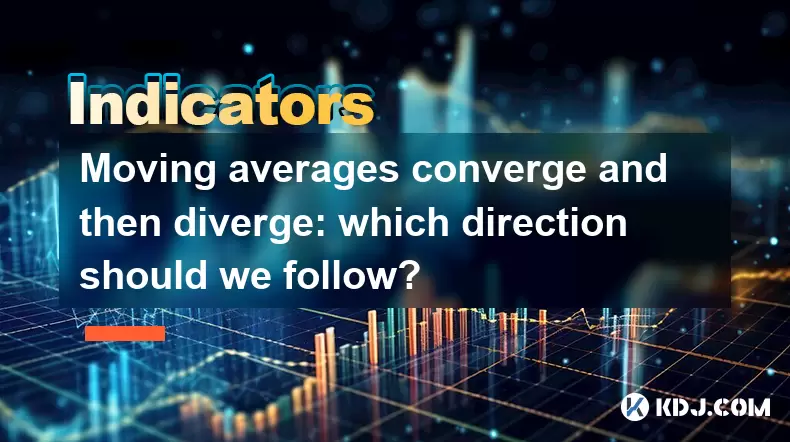
In the world of cryptocurrency trading, moving averages are a popular technical analysis tool used to smooth out price action and identify trends over time. When moving averages converge and then diverge, it signals potential shifts in market momentum and trend direction. This phenomenon can be particularly intriguing for traders as it presents opportunities to enter or exit trades. The key question that arises is: which direction should we follow when moving averages converge and then diverge? Let's explore this in detail.
Understanding Moving Averages
Before delving into the convergence and divergence of moving averages, it's crucial to understand what moving averages are and how they work. A moving average is calculated by taking the average price of a cryptocurrency over a specified period. The two most commonly used moving averages in trading are the Simple Moving Average (SMA) and the Exponential Moving Average (EMA).
- Simple Moving Average (SMA): This is calculated by adding up the closing prices of a cryptocurrency over a certain number of periods and then dividing that total by the number of periods.
- Exponential Moving Average (EMA): This places more weight on recent prices, making it more responsive to new information. The formula for EMA involves a smoothing factor that adjusts the weighting of prices.
Convergence of Moving Averages
When moving averages converge, it means that the short-term moving average (like a 50-day EMA) is moving closer to the long-term moving average (like a 200-day EMA). This convergence can signal a period of consolidation or a potential trend reversal. Traders often watch for this event because it can precede significant price movements.
- Bullish Convergence: If the short-term moving average is approaching the long-term moving average from below, it might suggest that the market is gaining bullish momentum.
- Bearish Convergence: Conversely, if the short-term moving average is approaching from above, it might indicate bearish momentum.
Divergence of Moving Averages
After converging, moving averages can diverge, meaning they start to move away from each other. This divergence can provide insights into the strength and direction of the new trend.
- Bullish Divergence: When the short-term moving average crosses above the long-term moving average after convergence, it's known as a Golden Cross. This is often interpreted as a strong bullish signal.
- Bearish Divergence: When the short-term moving average crosses below the long-term moving average, it's referred to as a Death Cross. This is typically seen as a bearish signal.
Interpreting Convergence and Divergence
Interpreting the convergence and divergence of moving averages involves understanding the context and other market indicators. Here are some steps to follow:
- Identify the Convergence: Look for the short-term and long-term moving averages moving closer together.
- Watch for Divergence: Monitor the moving averages for signs of separation.
- Confirm with Other Indicators: Use other technical indicators like the Relative Strength Index (RSI) or Moving Average Convergence Divergence (MACD) to confirm the signals.
- Consider Volume: High trading volume during divergence can validate the strength of the new trend.
Trading Strategies Based on Convergence and Divergence
Traders can develop various strategies based on the convergence and divergence of moving averages. Here are a couple of common approaches:
- Trend Following: After a Golden Cross, traders might enter long positions, expecting the price to rise. Conversely, after a Death Cross, they might enter short positions or exit long positions, anticipating a price drop.
- Mean Reversion: Some traders might look for overbought or oversold conditions after divergence and trade against the trend, expecting a return to the mean.
Practical Example: Bitcoin's Moving Averages
Let's consider a practical example with Bitcoin to illustrate the concepts of convergence and divergence of moving averages.
- Convergence: Suppose Bitcoin's 50-day EMA starts to converge with its 200-day EMA. This could indicate a period of consolidation.
- Divergence: If the 50-day EMA then crosses above the 200-day EMA, creating a Golden Cross, it might suggest a bullish trend.
- Trading Decision: Based on this signal, a trader might decide to buy Bitcoin, expecting the price to rise.
Risk Management and Moving Averages
While moving averages can provide valuable insights, it's essential to incorporate risk management strategies. Here are some tips:
- Set Stop-Loss Orders: Determine your risk tolerance and set stop-loss orders to limit potential losses.
- Use Position Sizing: Adjust the size of your positions based on your overall portfolio and risk management strategy.
- Diversify: Don't put all your eggs in one basket. Diversify your investments to spread risk.
Technical Analysis Tools for Monitoring Moving Averages
To effectively monitor the convergence and divergence of moving averages, traders can use various technical analysis tools and platforms. Here are some popular options:
- TradingView: Offers customizable charts and indicators, allowing traders to plot multiple moving averages and monitor their interactions.
- Coinigy: Provides advanced charting tools and real-time data, ideal for tracking moving averages across different cryptocurrencies.
- CryptoWatch: A platform designed for cryptocurrency trading, featuring comprehensive charting tools and moving average indicators.
Frequently Asked Questions
Q: Can moving averages be used for all cryptocurrencies?
A: Yes, moving averages can be applied to any cryptocurrency that has sufficient trading volume and historical price data. However, the effectiveness of moving averages can vary depending on the liquidity and volatility of the specific cryptocurrency.
Q: How do I choose the right time periods for moving averages?
A: The choice of time periods for moving averages depends on your trading style and goals. Short-term traders might use shorter periods (e.g., 10-day and 20-day moving averages), while long-term investors might prefer longer periods (e.g., 50-day and 200-day moving averages). Experiment with different combinations to find what works best for your strategy.
Q: Are there any limitations to using moving averages?
A: Yes, moving averages have some limitations. They are lagging indicators, meaning they are based on past prices and might not predict future movements accurately. Additionally, in highly volatile markets, moving averages can produce false signals, leading to potential losses if not used in conjunction with other indicators.
Q: Can moving averages be combined with other technical indicators?
A: Absolutely, combining moving averages with other technical indicators can enhance your trading strategy. For example, using the MACD alongside moving averages can help confirm trend changes, while the RSI can indicate overbought or oversold conditions, adding another layer of analysis to your decision-making process.
Disclaimer:info@kdj.com
The information provided is not trading advice. kdj.com does not assume any responsibility for any investments made based on the information provided in this article. Cryptocurrencies are highly volatile and it is highly recommended that you invest with caution after thorough research!
If you believe that the content used on this website infringes your copyright, please contact us immediately (info@kdj.com) and we will delete it promptly.
- SEC, Bitcoin, and Crypto: Navigating the Wild West of Digital Finance
- 2025-07-23 04:30:12
- Tyre Legalities, the 20p Test, and Expert Advice: Staying Safe on the Road
- 2025-07-23 04:50:12
- Liberty Head Double Eagle Proofs: A Golden Opportunity?
- 2025-07-23 04:55:12
- Solana NFTs Surge: Riding the Wave of Market Volume and NFT Hype
- 2025-07-23 04:30:12
- Stablecoin Market, US Treasuries, and Financial Risk: A Deep Dive
- 2025-07-23 05:00:13
- Wall Street Pepe (WEPE) and the Solana Meme Coin Mania: A New Era?
- 2025-07-23 03:30:13
Related knowledge
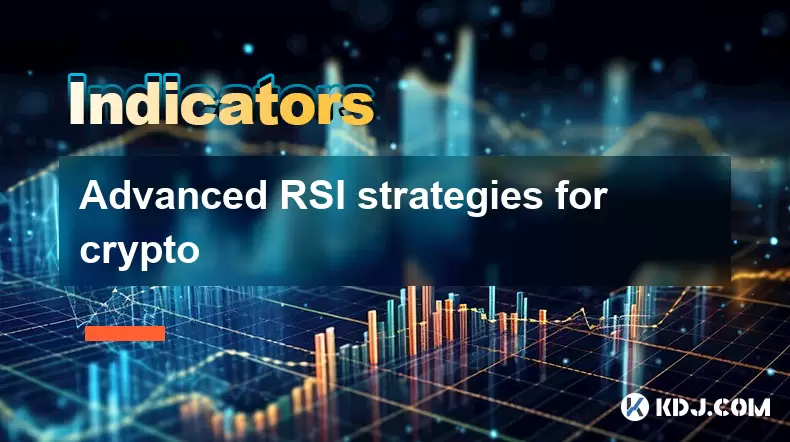
Advanced RSI strategies for crypto
Jul 13,2025 at 11:01am
Understanding the Basics of RSI in Cryptocurrency TradingThe Relative Strength Index (RSI) is a momentum oscillator used to measure the speed and chan...
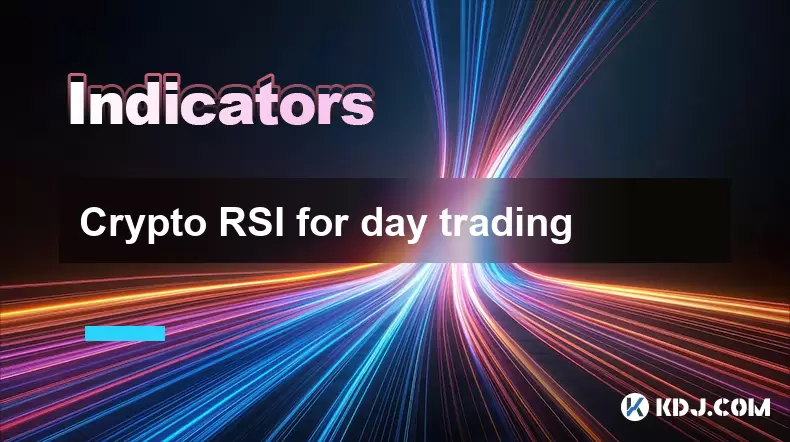
Crypto RSI for day trading
Jul 12,2025 at 11:14am
Understanding RSI in the Context of Cryptocurrency TradingThe Relative Strength Index (RSI) is a momentum oscillator used to measure the speed and cha...
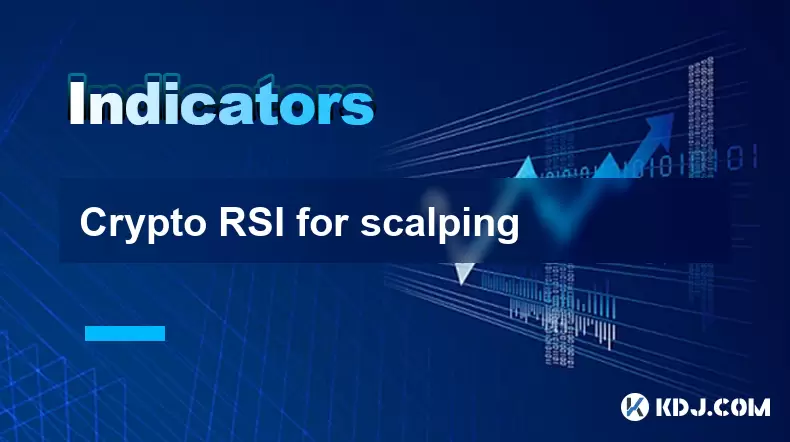
Crypto RSI for scalping
Jul 12,2025 at 11:00pm
Understanding RSI in the Context of Crypto TradingThe Relative Strength Index (RSI) is a momentum oscillator widely used by traders to measure the spe...
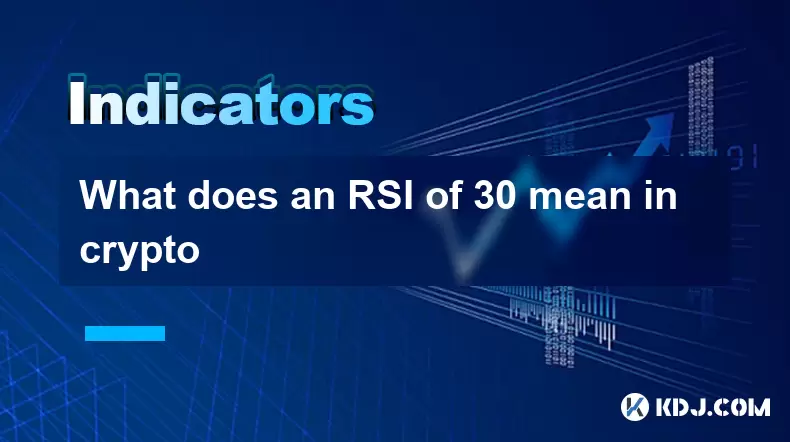
What does an RSI of 30 mean in crypto
Jul 15,2025 at 07:07pm
Understanding RSI in Cryptocurrency TradingRelative Strength Index (RSI) is a momentum oscillator widely used in cryptocurrency trading to measure the...
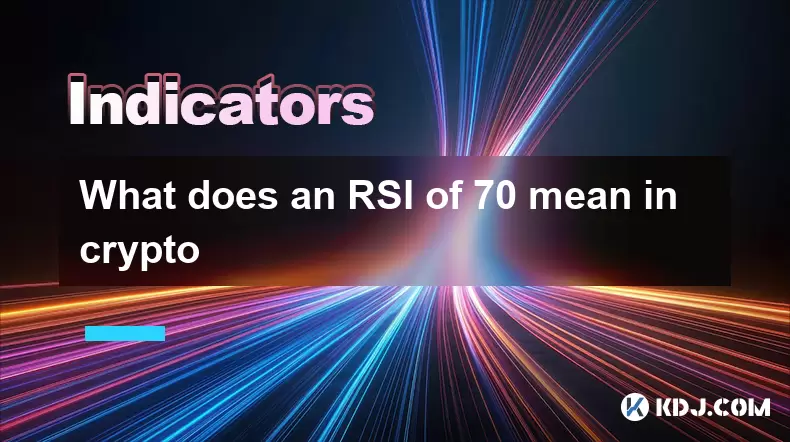
What does an RSI of 70 mean in crypto
Jul 13,2025 at 06:07pm
Understanding the RSI Indicator in Cryptocurrency TradingThe Relative Strength Index (RSI) is a widely used technical analysis tool that helps traders...
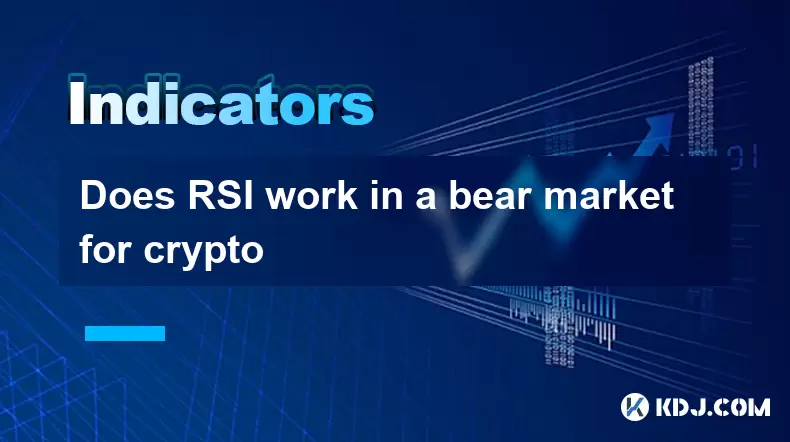
Does RSI work in a bear market for crypto
Jul 16,2025 at 01:36pm
Understanding RSI in Cryptocurrency TradingThe Relative Strength Index (RSI) is a momentum oscillator used by traders to measure the speed and change ...

Advanced RSI strategies for crypto
Jul 13,2025 at 11:01am
Understanding the Basics of RSI in Cryptocurrency TradingThe Relative Strength Index (RSI) is a momentum oscillator used to measure the speed and chan...

Crypto RSI for day trading
Jul 12,2025 at 11:14am
Understanding RSI in the Context of Cryptocurrency TradingThe Relative Strength Index (RSI) is a momentum oscillator used to measure the speed and cha...

Crypto RSI for scalping
Jul 12,2025 at 11:00pm
Understanding RSI in the Context of Crypto TradingThe Relative Strength Index (RSI) is a momentum oscillator widely used by traders to measure the spe...

What does an RSI of 30 mean in crypto
Jul 15,2025 at 07:07pm
Understanding RSI in Cryptocurrency TradingRelative Strength Index (RSI) is a momentum oscillator widely used in cryptocurrency trading to measure the...

What does an RSI of 70 mean in crypto
Jul 13,2025 at 06:07pm
Understanding the RSI Indicator in Cryptocurrency TradingThe Relative Strength Index (RSI) is a widely used technical analysis tool that helps traders...

Does RSI work in a bear market for crypto
Jul 16,2025 at 01:36pm
Understanding RSI in Cryptocurrency TradingThe Relative Strength Index (RSI) is a momentum oscillator used by traders to measure the speed and change ...
See all articles

























































































